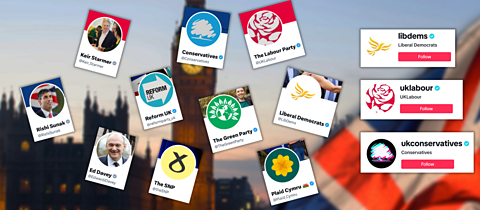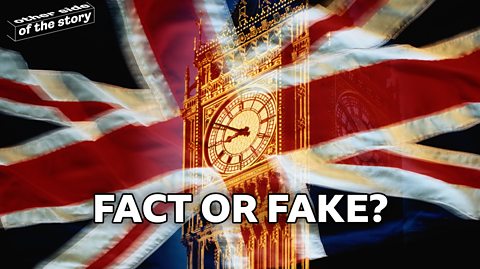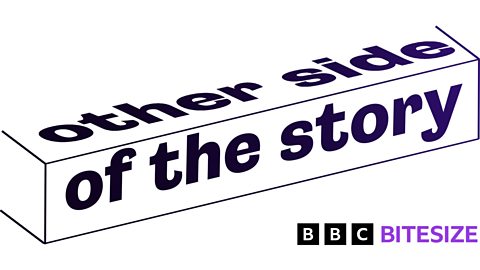Prime Minister Rishi Sunak ended months of speculation recently when he announced that the next general election will take place on 4 July. In the run-up to the big day you're bound to see, hear and read loads about the election, the political parties and their leaders on your social feeds. But with so much content popping up, how do you know what you can and can't believe?
Here are some top tips to help you spot fake news during the general election. But first…
What is a general election?
A general election is the chance for people in the UK to vote for their Member of Parliament (MP). You cannot vote for a new Prime Minister at the general election, just your local MP, but the political party with the most MPs usually form a government and their leader usually becomes the Prime Minister.
To vote in a general election you must be 18 or over, but the results of the vote will still have a big impact on younger people, as the party who is in government can pass laws that might affect you.
3 tips to spot fake election news on social media

1. Seeing is not always believing
This year's general election will be one of the first where AI images, deepfakes and manipulated videos blur the lines between what is real and what is fake – not everything you see on your socials during an election period will be the real deal. A ±«Óătv report has recently found that TikTok users are being fed misleading election news, with parody clips and AI content often being confused with facts.
Things can get even more confusing as official accounts from the political parties have also posted manipulated images and videos of their opposition in an attempt to get one up on their rivals, as seen in the example of Rishi Sunak's flipchart demonstration. The Conservatives posted the original flipchart video to mock Labour's 'lack of plans' for the country. Labour then responded by posting a manipulated version of the clip, listing their plans on the flipchart. Similarly, the Conservatives have posted manipulated images and parody videos mocking the Labour Party.
Some tips to help you spot AI images on social media are:
- Focus on the details AI often struggles with creating things like hands, or recreating logos on clothing.
- Is the image too perfect? AI images can lack detail, so sometimes gives the images an 'airbrushed' or 'filtered' look.
- Use reverse image search If you are unsure whether an image is real or ai, then do a reverse image search – does the image also appear on reliable websites?
We have more tips on how to spot AI images on social media to help you stay vigilant whilst you are scrolling through your socials. Remember if something doesn't look or sound right, make sure you verify it before sharing.


2. Check the source
A good way to know that a social post has come from an official account for one of the political parties, a politician or a reputable news outlet, rather than an imposter, is to check that the account is genuine.
Verified accounts on TikTok, Facebook and Instagram usually have a blue tick next to their name which means they are the real deal. But be aware that X, formerly Twitter, recently changed their blue tick policy; a blue tick on X means that a user has an active subscription to X Premium and meets eligibility requirements, one of the requirements is that an account is non-deceptive, which should offer some reassurance – but doesn't always mean the account is who they say they are.
Beware of fake accounts on socials, which may have usernames that look like they belong to the real deal, but check the detail. Is their name spelt correctly? Do they mention that they are a parody account? Is what they are posting in line with what news outlets are reporting?

3. Open your mind
Whilst you probably spend a lot of your time online scrolling through social media, there is literally a whole world wide web you can use to help back up the claims that you've seen on your feed. If you've seen something that looks or sounds fishy on your socials, then you should check the facts and use critical thinking.
Politics is an emotive subject and people can often make wildly exaggerated claims, which you may want to share. But before you hit that share button, stop and think, is this source credible? Is what they're saying accurate? Make sure to look for some credible sources to back up the claims you see on socials, this could be a reliable news outlet, journalist, or official material from a political party.
Although, if you see something posted on an official channel for one of the political parties, you shouldn't always take it at face value. Even authentic videos can have misleading comments and may only be giving one side of the story, this is known as bias. It's worth opening your mind to other views, opinions and facts before making your mind up.

Not sure if the news you’re seeing on social media is true or false? Can you always tell if the things you see online are real or fake? Learn how to get the other side of the story with our quizzes, videos and explainers.


